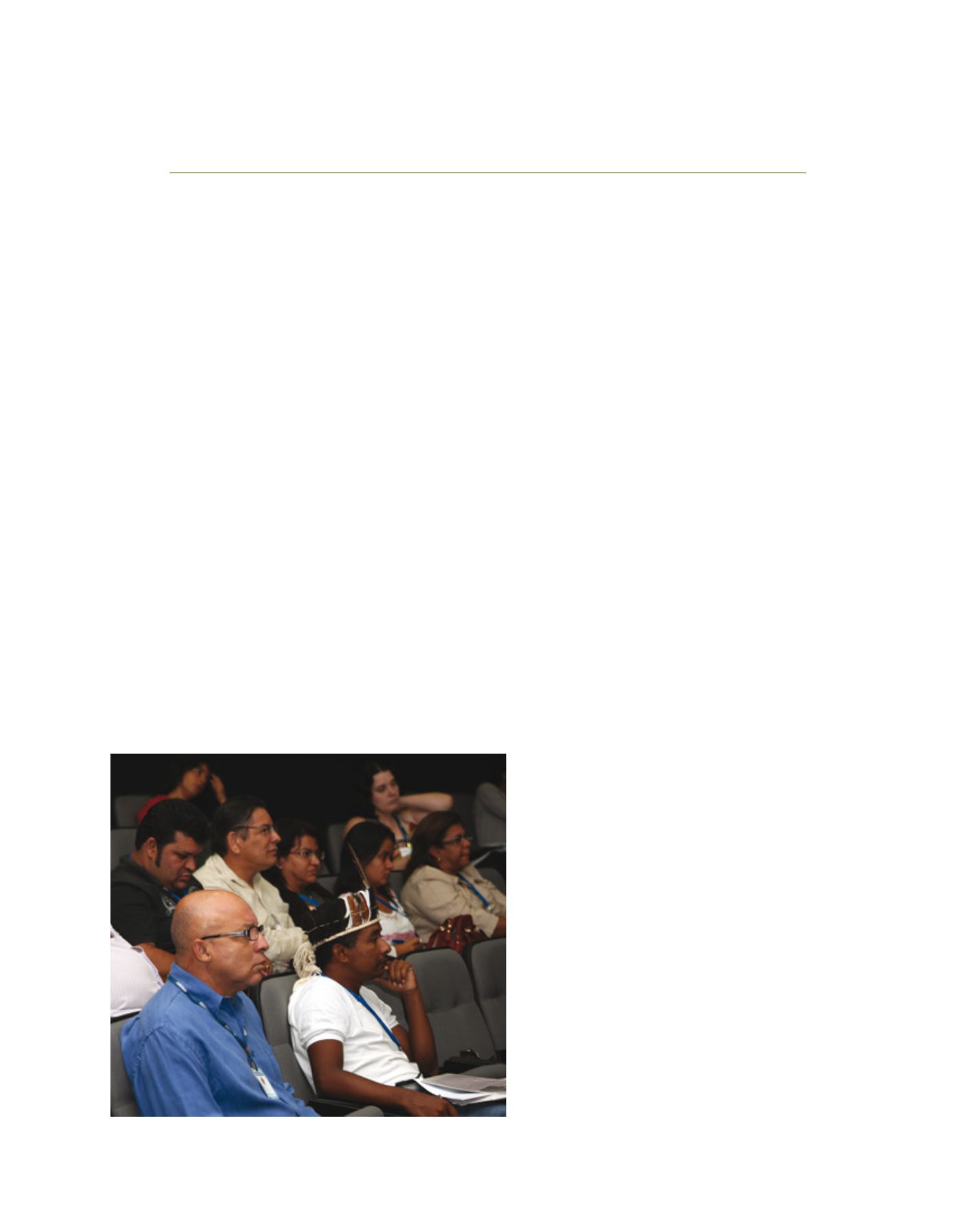

[
] 225
Water cooperation – the Brazilian case
Paulo Augusto Cunha Libânio, Water Resources Specialist, National Water Agency, Brazil
F
rom the last decades of the twentieth century onward,
there has been increasing concern about the impact of
demographic change and economic growth on global
water availability. Uncertain scenarios for climate change only
add to existing concerns over water distribution in time and
space, requiring robust strategies at national and international
levels aimed at curbing water scarcity and water shortages.
In the face of such challenges, water cooperation is of paramount
importance to sustainable development. It includes a series of issues,
from transferring of water technology to water financing. Sharing
experiences is also a crucial aspect of water cooperation, as there are
no universal recipes for success in water governance and no shortcuts
to promote effective water management other than gaining knowledge
from hard-learned lessons. Above all, sharing experiences helps us
to rethink basic questions such as the role of political institutions in
developing water policies and that of civil society in bringing about
greater public engagement in water governing processes.
In this sense, the Brazilian experience with democratic water govern-
ance mechanisms is an interesting case. Brazil is a federal republic
made up of subnational administrative units (a federal district, 26
states and 5,565 municipalities) that are politically autonomous
but interdependent. In addition, Brazil is a country of continental
dimensions – approximately 8.5 million km
2
– almost equivalent to
Europe, with huge water basins including large aquifers
and extensive streams of water cross-cutting and border-
ing different self-governing states.
To some extent, the challenges for securing water
governance within the Brazilian federation may be
compared to those faced by neighbouring countries
when dealing with transboundary waters. The main
issues facing Brazil can be addressed from two differ-
ent perspectives. Firstly, that of the cooperative efforts
built on relationships between representatives of state
and non-state actors, particularly in water forums with
board-like structures and deliberative powers such as
water councils (at national and state levels) and river
basin committees (at regional level). And secondly, that
of the relationship between state actors across different
branches of government and through different levels of
Brazil’s federal system such as federal, state and munici-
pal governments.
Participatory and decentralized water management
Brazil’s water policy of 1997 determined that water
management should guarantee the multiple uses of
water resources, while being decentralized and partici-
patory. It involves public authorities, water users and
civil society in the decision-making process. These legal
provisions require a governance system capable of coor-
dinating the actions of all social actors involved – from
the small landowner to big water industry and from
voluntary environmental groups to private entrepre-
neurs, each with their own convictions and expectations
about how water resources should be allocated.
To decide when, for whom, how much and in
which way it is possible to allocate water resources,
one cannot rely only on technical criteria. Defining
objectives and priorities for water use is primarily a
political process. Hence, according to the democratic
values enshrined in the Brazilian Constitution of 1988
and the new principles and guidelines established by
the water reforms of the 1990s, this process could
no longer be confined to the limits of technocracy.
It could neither be submitted to the administrative
powers held by public offices, nor conditioned to the
organized interests vested in elected officials.
Based on that principle, Brazilian policymakers
created an institutional mechanism by which all social
actors – government, private and voluntary sectors
alike – have the opportunity to decide major questions
through direct democracy. Based on the French water
W
ater
C
ooperation
, S
ustainability
and
P
overty
E
radication
Image: Raylton Alves courtesy of the National Water Agency
Meeting of the São Francisco River Basin Committee


















